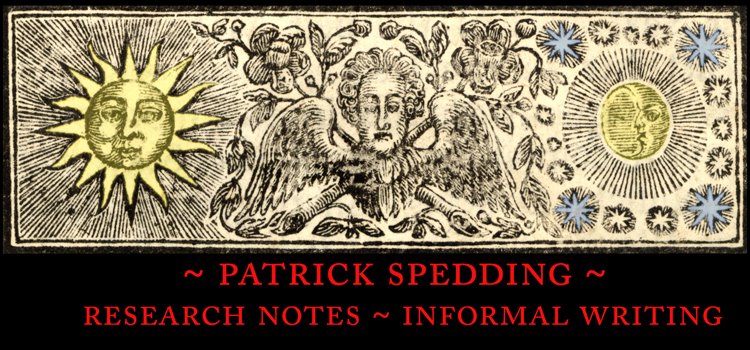Eliza Haywood translated Madeleine Angélique Poisson de Gomez’s Les Journées Amusantes (Paris: G. Saugrain, Charles le Clerc, Ándre Morin, 1722–31), over a lengthy period, as the eight volumes of the original work appeared in 1722 (v.1–2), 1724 (v.3–4), 1730 (v.5–6) and 1731 (v.7–8). Haywood's translation, La Belle Assemblée, appeared in 1724 (pt.1–3 = v.1), 1727 (v.2), 1731 (v.3), 1734 (v.4). Part of my incentive to aggregate information about, and links to, editions of Les Journées Amusantes, which I did on the weekend (see here), was to compare the illustrations in Les Journées Amusantes with those in Haywood's La Belle Assemblée.
I have long intended to undertake a comparison of the two sets of engravings, but I was never able to find a library with a full set of first editions of both works, and—although I now have plenty of copies of La Belle Assemblée—I don't have many of Les Journées Amusantes and many of the reprints online, which I could have compared them to, either are not illustrated at all, or are only partially illustrated. Bottom line, this one has been in the too-hard basket for a long, long time.
Having made my comparison, I can report that Les Journées Amusantes contains twenty-four engraved plates: v.1 (four plates), v.2 (four), v.3 (five), v.4 (three), v.5 (two), v.6 (two), v.6 (two), v.8 (two)—that is v.1–2 (eight), v.3–4 (eight), v.5–6 (four) and v.7–8 (four). La Belle Assemblée, reproduces twenty of these: v.1 (six plates), v.2 (six), v.3 (four), v.4 (four).
As I discovered when I was researching my article "Imagining Eliza Haywood" (see here) in the first, two-volume edition of Les Journées Amusantes there is an engraved frontispiece of Louis XV in the first volume and an allegorical frontispiece of a woman in classical attire, writing, in the second. This second engraving replaced the first (i.e., the allegorical frontispiece displaces Louis XV) in the first volume in later French editions. As a consequence of this change, there was one fewer plate in later editions of Les Journées Amusantes, i.e.: v.1 (four plates), v.2 (three), etc.—that is v.1–2 (seven), v.3–4 (eight) etc.
As I mentioned, of the twenty-four (or -three) engraved plates in Les Journées Amusantes, La Belle Assemblée reproduces twenty. If we number the plates in Les Journées Amusantes, in the form 1.1, 1.2, 1.3, 1.4, 2.1, 2.2 etc., La Belle Assemblée reproduces them as follows: v.1 (2.1, 1.3, 3.1, 1.4, 2.2, 2.4), v.2 (1.2, 3.3, 3.4, 3.5, 4.1, 4.3), v.3 (5.1, 5.2, 6.1, 6.2), v.4 (7.1, 7.2, 8.1, 8.2).
Although the first editions of Les Journées Amusantes were illustrated, the first editions of the first three parts (which became the first volume) and the second volume of La Belle Assemblée were not illustrated. Engraved plates did not appear in La Belle Assemblée until 1728, when the first two-volume edition was published. This may be part of the reason why the frontispiece of Louis XV does not appear in La Belle Assemblée.
(That is, by the time the publisher commissioned the illustrations to be copied (1728), the frontispiece of Louis XV may no longer have been present in copies of the French edition available in London. However, since three other plates were also omitted in La Belle Assemblée, and my explanation does not apply to them, Louis XV could have been dropped for other reasons.)
As for the illustrations themselves, they are (disappointingly) pretty slavish copies of those in Les Journées Amusantes, lacking some of the details in the original** and — in the case of the four illustrations in the fourth volume of La Belle Assemblée — reversed.
By way of comparison, the Spanish translation by Baltasar Driguet, Jornadas Divertidas, reproduced only one engraving from Les Journées Amusantes, which is repeated in the first four volumes (5.1) (an original illustration is repeated in the second four volumes). A second translation into Spanish by Gaspar Zavala y Zamora, Dias alegres contains no illustrations. Likewise, the translation into Italian by Pietro Chiari, Li Giorni di Divertimento contains no illustrations. I am not sure if the German edition was illustrated.
**If I get the opportunity (if I can get decent images to work with), I will post a few paired French and English illustrations below to show what I mean.
Thursday 2 August 2018
Subscribe to:
Posts (Atom)

